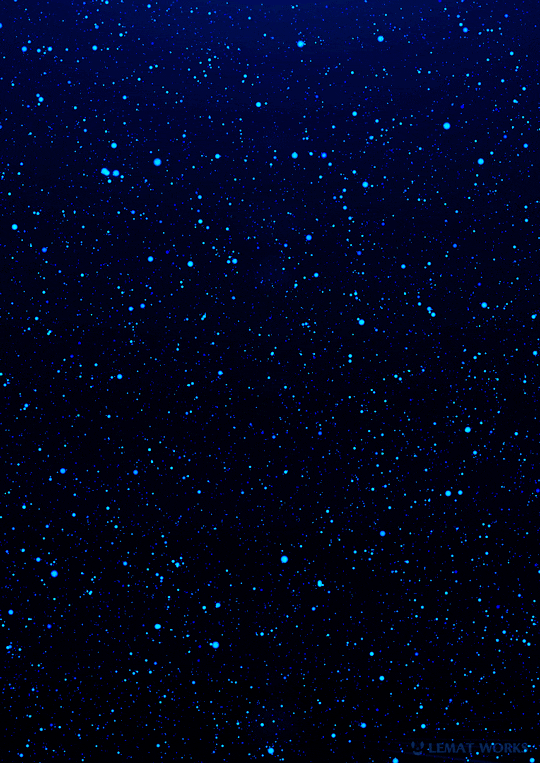Inner Depth.

Inner Depth.
You can get this GIF as a phone wallpaper for free through the Zedge app.
You can also get this GIF as a looping 1080p video if you support me on Patreon.
Twitter / Instagram / Shop / Patreon / Zedge
More Posts from Epic-flight and Others

A 1979 work by space artist Don Dixon shows dwarf planet Pluto as seen from one of its moons. (Cosmographica)

| instagram | behance | ello |


HiPOD: Bedrock Exposures in Nirgal Vallis
This observation covers two tributaries and the main channel of Nirgal Vallis. The channel is approximately 610 kilometers long and is named after Nergal, the Babylonian god of war and counterpart to the Roman god of war, Mars. Mars Orbiter Camera image show light-toned bedrock; our high resolution picture can gives us a better view of the channel form and bedrock stratigraphy. (Grayscale cutout is less than 5 km across; enhanced color is less than 1 km.)
ID: ESP_074945_1515 date: 23 July 2022 altitude: 257 km
NASA/JPL-Caltech/UArizona
View these celestial beauties taken by the Hubble Space Telescope and released as a set of views in a modern day “Messier Catalog."
Spotting comets was all the rage in the middle of the 18th century, and at the forefront of the comet hunt was a young French astronomer named Charles Messier. In 1774, in an effort to help fellow comet seekers steer clear of astronomical objects that were not comets (something that frustrated his own search for these elusive entities), Messier published the first version of his “Catalog of Nebulae and Star Clusters,” a collection of celestial objects that weren’t comets and should be avoided during comet hunting. Today, rather than avoiding these objects, many amateur astronomers actively seek them out as interesting targets to observe with backyard telescopes, binoculars or sometimes even with the naked eye.
Hubble’s version of the Messier catalog includes eight newly processed images never before released by NASA. The images were extracted from more than 1.3 million observations that now reside in the Hubble data archive. Some of these images represent the first Hubble views of the objects, while others include newer, higher resolution images taken with Hubble’s latest cameras.
Learn more: https://www.nasa.gov/content/goddard/hubble-s-messier-catalog
Make sure to follow us on Tumblr for your regular dose of space: http://nasa.tumblr.com.

Produced by LEMAT WORKS
🔵 Deep Blue Purple Red Green Orange/ Twinkle Night3 2 17 27 29 / Prism Ocean / instagram / Behance (High Resolution) 🔵









Quantum Physics: The study of Super Cold and Super Small.
Via The cosmos way

Traverse - 211226








Titan, moon of Saturn, observed by the Cassini space probe from 2004 to 2015.

Danny Flynn

Proposal for GIF IT UP 2016
-
 leaf-inthewind reblogged this · 7 months ago
leaf-inthewind reblogged this · 7 months ago -
 dotglobal liked this · 10 months ago
dotglobal liked this · 10 months ago -
 k-marche reblogged this · 1 year ago
k-marche reblogged this · 1 year ago -
 aisudabi reblogged this · 1 year ago
aisudabi reblogged this · 1 year ago -
 k-marche liked this · 1 year ago
k-marche liked this · 1 year ago -
 perfectframes reblogged this · 1 year ago
perfectframes reblogged this · 1 year ago -
 pfthird liked this · 1 year ago
pfthird liked this · 1 year ago -
 low--key reblogged this · 1 year ago
low--key reblogged this · 1 year ago -
 vocrox liked this · 1 year ago
vocrox liked this · 1 year ago -
 yolo-bagins reblogged this · 1 year ago
yolo-bagins reblogged this · 1 year ago -
 shimmerfins liked this · 2 years ago
shimmerfins liked this · 2 years ago -
 evgsshh liked this · 2 years ago
evgsshh liked this · 2 years ago -
 halfpoisonhalfgod liked this · 2 years ago
halfpoisonhalfgod liked this · 2 years ago -
 rbcvxx liked this · 3 years ago
rbcvxx liked this · 3 years ago -
 dez82 reblogged this · 3 years ago
dez82 reblogged this · 3 years ago -
 dez82 liked this · 3 years ago
dez82 liked this · 3 years ago -
 walawalahoopsie liked this · 3 years ago
walawalahoopsie liked this · 3 years ago -
 flamingosruleforever liked this · 3 years ago
flamingosruleforever liked this · 3 years ago -
 blacknprettyincloudcity liked this · 3 years ago
blacknprettyincloudcity liked this · 3 years ago -
 pleasantfarmwobblerrascal liked this · 3 years ago
pleasantfarmwobblerrascal liked this · 3 years ago -
 wingedroadv2 reblogged this · 4 years ago
wingedroadv2 reblogged this · 4 years ago -
 three30am liked this · 4 years ago
three30am liked this · 4 years ago -
 amnesiiaac reblogged this · 4 years ago
amnesiiaac reblogged this · 4 years ago -
 aphrodisiacgoddessart liked this · 4 years ago
aphrodisiacgoddessart liked this · 4 years ago -
 maximumkalbo liked this · 4 years ago
maximumkalbo liked this · 4 years ago -
 panperiergos liked this · 4 years ago
panperiergos liked this · 4 years ago -
 pestox-blog liked this · 4 years ago
pestox-blog liked this · 4 years ago -
 hadesmalum reblogged this · 4 years ago
hadesmalum reblogged this · 4 years ago -
 khunview33 liked this · 4 years ago
khunview33 liked this · 4 years ago -
 larskukka liked this · 4 years ago
larskukka liked this · 4 years ago -
 amputabilepancreas liked this · 4 years ago
amputabilepancreas liked this · 4 years ago -
 qu33nkamara liked this · 4 years ago
qu33nkamara liked this · 4 years ago -
 headlesssamurai liked this · 4 years ago
headlesssamurai liked this · 4 years ago -
 the-image-file reblogged this · 4 years ago
the-image-file reblogged this · 4 years ago -
 itsyouandmetogetherforalways liked this · 4 years ago
itsyouandmetogetherforalways liked this · 4 years ago -
 innavx liked this · 4 years ago
innavx liked this · 4 years ago
